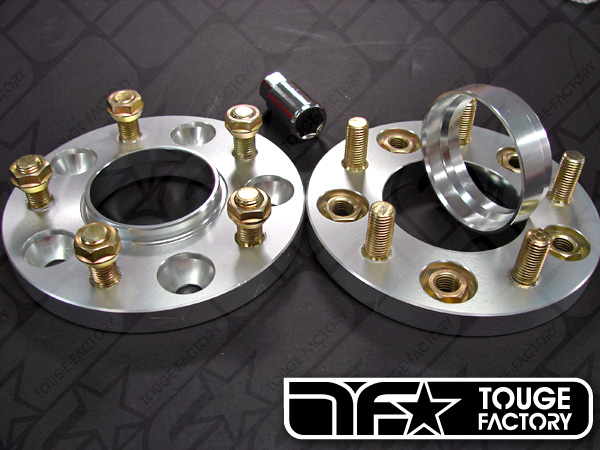Ford Mustang GT 1996-2014: Wheel Spacers General Information
Spacers are an excellent way to increase the overall performance of your Mustang GT. Check out all the available options you have at your disposal.
This article applies to the Ford Mustang GT (1996-2014).
Wheel spacers are special components that allow a vehicle to extend the clearance of the size of wheels they can use. Quality wheel spacers are comprised of hard alloys, such as stainless steel, and are available in two types which host two specific variations. Standard slip-on spacers use the original studs and are often sold as a universal fit. Other slip-on spacers include those with hubcentric lips that allow the wheels to center easier. The other variation is called a bolt-on spacer, which using slim nuts to tighten itself onto the actual hub assembly. This spacer is also available in floating or hubcentric models.
A primary benefit of using a wheel spacer is the ability to host wider wheels and tires. The tires can greatly increase the amount of traction on the car, while the wheels are often used to help make the car look more aggressive. Although many drivers quickly gloss over the idea of using a spacer, a Mustang has a not-so-pretty stock offset that leaves newer wheel installations looking a bit too far in. Spacers give car owners the freedom to correct that frustration and even allow the actual stance of the wheels to be completely customized based on where they want it to sit.
Component Breakdown
Bolt-on Spacers
Most of the general population agrees these are the safest, despite being the most expensive, spacers to choose. While it is true that some bolt-on spacers do not have a lip at its center, they still use their own studs. Also, while it may be hard to center the wheel being installed, they will still provide a safer alternative to floating slip-on spacers. Hubcentric spacers combine the structural stability of its own studs with a center lip, so the weight and strain of the wheels being used can be transmitted to the center of the hub.

Slip-on Spacers
These are available in smaller sizes, usually between 3mm - 8mm, as they rest on the threads of stock studs. Some of these spacers are hubcentric and allow the wheel to remain centered on the hub, but may require extended studs to increase its reliability. However, the small slip-on spacers are often used in applications where a small amount of clearance is required. These smaller spacers may not require extended studs to be used in their installation.

Scheduled Maintenance
Because wheel spacers are mounted between the hub assembly and actual rim, they can act as a form of interference between the actual wheel and chassis of the vehicle. Remember to check and re-torque the lug nuts every few thousands miles. If you are using a bolt-on spacer, make sure to remove each wheel and re-torque them. Neglecting spacer maintenance can result in the wheel falling off as it is being driven.
Are wheel spacers dangerous?
No, unless they are not maintained. A wheel spacer will provide the same level of protection as a normal wheel hub, if the studs are properly torque down to the recommended specifications.
What purpose do wheel spacers serve?
Wheel spacers are not meant to be used by everyone, and generally serve people looking to install wheels that would not normally fit the Mustang chassis. Although it should be mentioned, some drivers do use spacers for performance applications, such as installing wider tires for track use.
Related Discussions
- Are Wheel Spacers Safe? - MustangForums.com
- Wheel Spacers---Installed - MustangForums.com
- Anyone Out There Put Wheel Spacers on SN95? - MustangForums.com






